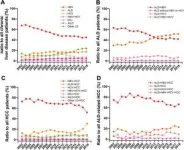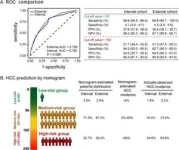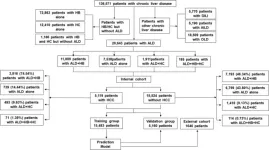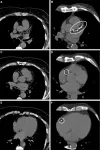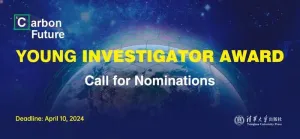(Press-News.org) Scientists have unveiled a groundbreaking sensor that can wirelessly detect chemical warfare agents, marking a significant leap in public safety technology. This innovative device, capable of identifying substances like dimethyl methylphosphonate (DMMP), offers a new level of efficiency and reliability in monitoring and responding to chemical threats, without the need for direct power sources or physical connections.
The urgent need for advanced detection of chemical warfare agents (CWAs) to ensure global security has led to the development of a novel gas sensor. This sensor is distinguished by its rapid response, high sensitivity, and compact size, crucial for the early detection of CWAs. Accurate detection and monitoring of CWAs are vital for effective defense operations, both military and civilian. Due to the hazardous nature of CWAs, research is typically limited to authorized laboratories using simulants that mimic CWAs' chemical structure without their toxic effects.
A recent study (doi: https://doi.org/10.1038/s41378-023-00627-8) led by a team of experts, published on January 3, 2024, in the journal Microsystems & Nanoengineering, have developed a cutting-edge sensor that wirelessly identifies chemical warfare agents, revolutionizing safety measures. This device efficiently detects DMMP, enhancing threat response capabilities without relying on power sources or connections.
In the study, researchers have innovated a passive, wireless sensor system using surface acoustic wave (SAW) technology, set to revolutionize chemical warfare agent detection by specifically targeting dimethyl methylphosphonate (DMMP), a simulant for nerve agents. This sensor operates at 433 MHz, using a unique coating of fluoroalcohol polysiloxane (SXFA) on a lithium niobate substrate, enhancing its sensitivity and stability under various environmental conditions. The system's core is built around a YZ lithium niobate substrate equipped with metallic interdigital transducers (IDTs) and an attached antenna. The SXFA film's interaction with DMMP alters the SAW's properties, such as velocity, enabling precise detection. This design ensures stable operation within a 0-90 cm transmission range and is resilient across a wide temperature range (-30 °C to 100 °C) and humidity levels up to 60% RH.
According to the research team, this sensor system marks a significant leap forward in CWA detection technology. Its passive wireless nature allows operation in inaccessible or hazardous areas, ensuring safety and efficiency.
This technology has immense potential in military and civilian defense, offering a reliable, efficient means of early CWA detection. Its ability to operate wirelessly and in challenging environments makes it a valuable tool for ensuring public safety and preparedness against chemical threats.
###
References
DOI
10.1038/s41378-023-00627-8
Original Source URL
https://doi.org/10.1038/s41378-023-00627-8
About Microsystems & Nanoengineering
Microsystems & Nanoengineering is an online-only, open access international journal devoted to publishing original research results and reviews on all aspects of Micro and Nano Electro Mechanical Systems from fundamental to applied research. The journal is published by Springer Nature in partnership with the Aerospace Information Research Institute, Chinese Academy of Sciences, supported by the State Key Laboratory of Transducer Technology.
END
Game-changing sensor unveiled for spotting chemical threats
2024-03-05
ELSE PRESS RELEASES FROM THIS DATE:
The many faces of a zinc anode: Configurations can make a difference in performance
2024-03-05
Sometimes the solution to a problem can be as simple as changing the way the components are structured
Researchers have proposed a reconfiguration of zinc anodes, a component of renewable energy sources, to help improve the battery and reduce the reliance society has on fossil fuels. The potential that different configurations of a zinc anode can have could reduce costs and side reactions while increasing the safety of the rechargeable zinc metal battery (RZMB) and, of course, improve its “green” rating.
The results were published in Energy Materials and Devices ...
Team successfully synthesizes atomically precise metal nanoclusters
2024-03-05
A research team has successfully synthesized a metal nanocluster and determined its crystal structure. Their study provides experimental evidence for understanding and designing nanoclusters with specific properties at the atomic level. Metal nanoclusters have wide-ranging applications in the biomedical field.
Their work is published in the journal Polyoxometalates on February 6, 2024.
Scientists have shown interest in ligand-protected atomically precise metal nanoclusters because they have definite atomic structures and exceptional ...
Rising alcohol-related liver cancer prompts new prediction tool
2024-03-05
Liver cancer, unfortunately, is the sixth most common cancer and the third most frequent cause of cancer-related death globally. However, its distribution and causes vary greatly across different regions. While areas like Eastern Asia and sub-Saharan Africa see the most cases, the reasons behind them differ significantly.
In high-income countries, liver cancer has been on the decline thanks to widespread newborn hepatitis B vaccination and antiviral drugs. Meanwhile, low-income countries witness a worrying rise, ...
Sprinting ‘like a jet’ will produce Premier League strikers of tomorrow
2024-03-05
Sprinting “like a jet plane taking off” will help produce Premier League star strikers of tomorrow, new research has revealed.
A University of Essex study of Tottenham Hotspur’s academy has shown that just a few words can instantly boost sprinting speed by 3 per cent over 20 metres.
It would normally take weeks of targeted training to achieve such a large increase.
These short bursts of acceleration are largely seen in goal-scoring situations and could be the difference in beating a defender and finding the net.
Dr Jason Moran, from the School of Sport, Rehabilitation and Exercise Sciences, discovered simple analogies increased ...
Coronary artery calcium score predictive of heart attacks, strokes
2024-03-05
OAK BROOK, Ill. – Coronary artery calcium scoring with CT can identify symptomatic patients with a very low risk of heart attacks or strokes, according to a new study published today in Radiology, a journal of the Radiological Society of North America (RSNA). Researchers said the findings may one day help some patients with stable chest pain avoid invasive coronary angiography.
Coronary artery calcium scoring with CT was developed to noninvasively measure the amount of calcium in the arteries of the heart. Higher scores are linked with atherosclerosis, a buildup of plaque in the arteries. A score of 1 to 399, for instance, suggests a moderate amount of plaque, while 400 ...
Harvard neuroscientist Haim Sompolinsky awarded Brain Prize
2024-03-05
Haim Sompolinsky, Professor in Residence in Harvard’s Department of Molecular and Cellular Biology and Department of Physics, has received the Brain Prize for his pioneering contributions to computational and theoretical neuroscience.
Considered the world’s most prestigious prize for neuroscience research, the Brain Prize 2024 is shared by Sompolinsky, Larry Abbott of Columbia University, and Terrence Sejnowski of the Salk Institute. All three scientists have helped uncover key principles governing the brain’s structure, ...
Smoking during pregnancy may increase the risk of behavioral disorders in newborns, predicts AI
2024-03-05
Although several studies have linked smoking during pregnancy with neurodevelopmental disorders, the results of behavioral experiments in mice prenatally exposed to nicotine have been inconsistent. In a recent study, scientists from Japan developed a deep learning-based framework to automatically observe and classify mice behavior in such experiments, producing more accurate and unbiased results. They show that prenatal exposure to nicotine could increase the risk of autism spectrum- and attention deficit/hyperactivity disorders in newborns.
The fact that smoking is a risk factor for several diseases, including cancer, stroke, and diabetes, has been known for approximately ...
Dive into the future of molecular life sciences at #DiscoverBMB 2024
2024-03-05
Which natural products are helping solve biotech challenges? How can enzymes supercharge biodegradation for a greener tomorrow? What role does RNA play in cancer and other diseases? You’ll find the answers to these questions and more at Discover BMB, the annual meeting of the American Society for Biochemistry and Molecular Biology, to be held March 23–26 in San Antonio.
Secure your front-row seat to cutting-edge findings, approaches and technologies in the biological sciences by registering for a complimentary ...
Call for articles: Trends in Peace and Sustainability
2024-03-05
The Network for Education and Research on Peace and Sustainability (NERPS) at Hiroshima University is inviting submissions for Trends in Peace and Sustainability (TRENDS), an innovative academic platform dedicated to exploring the complex interplay between peace and sustainability. TRENDS aims to become a forum for scholars, professionals, and advocates to share their research, insights, and viewpoints on the pursuit of peace amid sustainability challenges. It aims to promote interdisciplinary engagement, stimulating conversation ...
2024 Carbon Future Young Investigator Award-Call for nominations
2024-03-05
The call for the 2024 Carbon Future Young Investigator Award is open!
About The Award
Tsinghua University Press announces the 2024 Carbon Future Young Investigator Award. This award is intended to recognize and encourage outstanding early career researchers in the areas of carbon-related materials, catalysis, energy conversion and storage, as well as low carbon emission process and engineering. The award includes an honorarium of $1,000 for each awardee (up to 10 awardees).
Eligibility
The nominee must be a current PhD student or postdoctoral researcher.
The nominee’s ...

